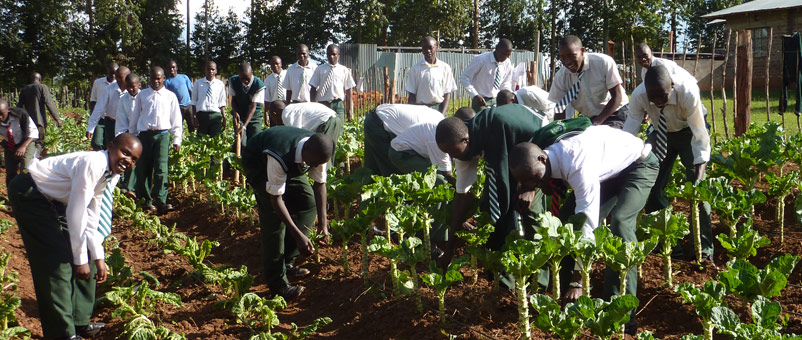The newly launched Agrobiodiversity Index report, compiled by Bioversity International, analyses the way in which countries are conserving and using their agricultural biodiversity.
The Index examines the ways that countries are responding to the risks that low agricultural biodiversity, or agrobiodiversity, pose to food and agriculture, namely malnutrition, poverty, climate change and variability, land degradation, pests and diseases and biodiversity loss.
Agrobiodiversity is the subset of biodiversity that includes the diversity of crops and their wild relatives, trees, animals, microbes and other species that contribute to agricultural production. More than 6000 species have been cultivated for food, and tens of thousands of species, and their crop wild relatives, exhibit traits that could make them useful to grow in difficult environments, to produce higher nutrient content or to increase overall yields.

For each of the ten countries analysed, the Index measures both the status (that is, how much agrobiodiversity currently exists) and the progress score, based on each country’s commitments and actions to improve the use and conservation of agrobiodiversity across diets, production and genetic resources.
”We hope that the insights generated through the Agrobiodiversity Index will help countries identify their strengths and areas for improvement so as to come up with tailored solutions to improve diets, production and genetic resource conservation, based on agrobiodiversity,” said Juan Lucas Restrepo, Director General of Bioversity International.
By making the most of the wealth of plants, animals and microorganisms at our disposal, farmers can boost productivity and nutrition quality, increase soil and water quality and reduce the need for fertilizers and pesticides, the report notes.
It can also make farmers’ livelihoods more resilient, by reducing the potential for yield losses as a result of climate change and pest damage.
“Increasing biodiversity in our food systems gives farmers more options to deal with risks of crop failure, declining soil fertility or increasingly variable weather,” said Restrepo.

There are also environmental benefits to preserving our agricultural biodiversity, such as increasing the abundance of pollinators and beneficial soil organisms and reducing the risk of pest epidemics. And with at least 80 per cent of all plant systems requiring animal-mediated pollination, healthy pollinators help ensure the next generation of plants are produced.
The report concludes that bringing agriculture, the environment, nutrition and health together to ensure they all work towards the same goal will lessen the impact of biodiversity loss. It emphasizes that conserving and using agricultural biodiversity can improve the livelihoods of millions of people around the world, mitigate against climate change and create sustainable and resilient food systems for years to come.



